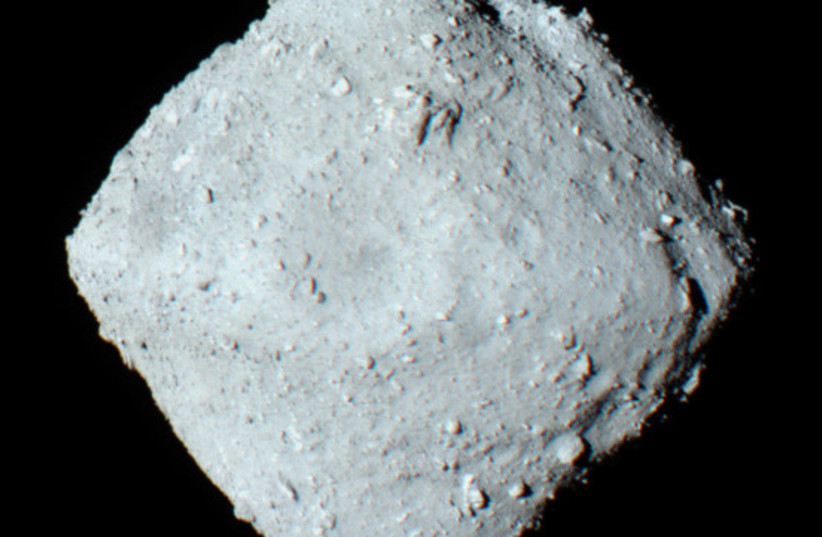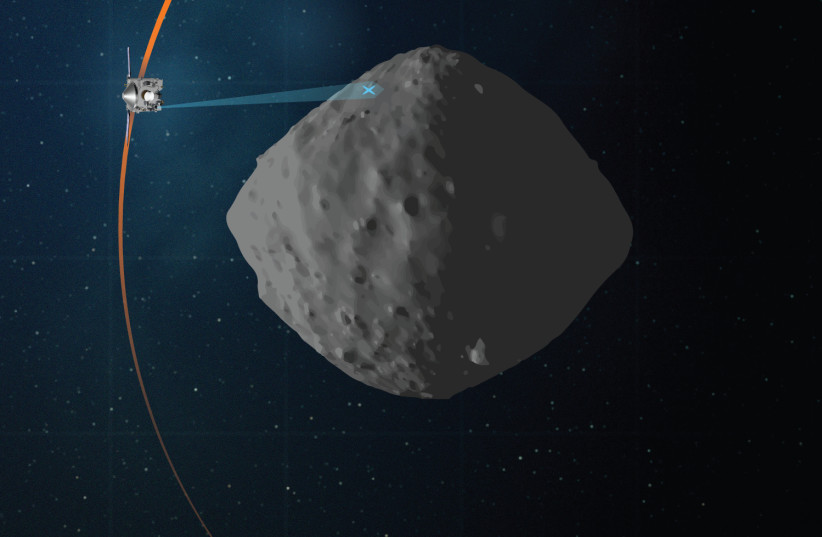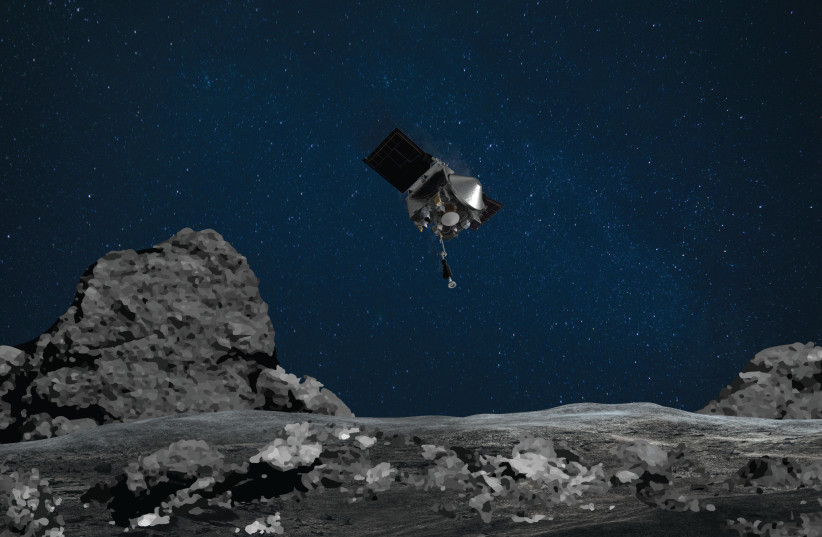The massive asteroid 101955 Bennu, arguably the most dangerous asteroid in the solar system, may not be as it seems, with NASA's OSIRIS-REx spacecraft determining the hard solid rock surface actually has the consistency of a plastic ball pit.
The news comes following NASA's success in collecting a sample from the 500-meter-wide asteroid in October 2020, whereupon it was analyzed that the spacecraft could very well have literally sunk beneath the asteroid's surface.
The findings of this were published in the peer-reviewed academic journals Science and Science Advances.
“Our expectations about the asteroid’s surface were completely wrong.”
Dante Lauretta
What is Bennu?
The near-Earth asteroid 101955 Bennu is one of the two most hazardous known asteroids in the solar system, along with 1950 DA.
This is especially notable given Bennu's size, around half a kilometer. For context, that's around the size of Toronto's CN Tower, a massive structure that was the world's largest structure for decades, until the construction of the Burj Khalifa in Dubai.
This massive asteroid is also recognized by the Sentry asteroid collision monitoring system at the Center for Near-Earth Object Studies (CNEOS) at NASA's Jet Propulsion Laboratory (JPL) as being the asteroid with the highest risk of impacting the Earth.
Right now, Bennu poses no threat and is very far from Earth. This is in line with prior predictions by NASA, which found that the Earth was at zero risk of an asteroid impact within the current century.
In fact, Sentry has calculated 157 possible impact scenarios with Bennu.
If it would impact the planet, the result would be extremely severe.
According to research from the Davidson Institute of Science, the educational arm of Israel's Weizmann Institute of Science, an asteroid over 140 meters in diameter would release an amount of energy at least a thousand times greater than that released by the first atomic bomb if it impacted Earth.
Something even larger — over 300 meters wide like the asteroid Apophis or Bennu — could destroy an entire continent. An asteroid over a kilometer in width — like the asteroid 7335 (1989 JA) — could trigger a worldwide cataclysm.
But Bennu is more than just the possible harbinger of the apocalypse. Rather, it may also host a wide variety of potential scientific knowledge of the origins of the solar system.
Bennu is thought to be a C-type asteroid, the most common kind in the solar system, the meteors from which almost rarely ever survive a trip through the atmosphere.
C-type asteroids, also known as carbonaceous, are thought to contain primordial materials from the nebula that essentially gave birth to the solar system as we know it.
Some scientists believe Bennu might actually be a CI chondrite type, an especially rate kind which almost never sees meteorites survive the trip into Earth's atmosphere.
Even more importantly, their chemical composition is similar to the Sun's photosphere.


Another asteroid like this, 162173 Ryugu, was studied by the Hayabusa2 mission from the Japan Aerospace Exploration Agency (JAXA), which managed to retrieve a sample. This sample has since arrived on Earth and has been carefully kept safe from exposure to the atmosphere.
Studies on it have since revealed incredible findings, such as the presence of amino acids — the building blocks of life.
As such, it seems possible that similar secrets could be on Bennu as well. But the asteroid proved to have other surprises.
What surprises awaited on this asteroid?
From the start, there were indications that the asteroid contained some surprises.


Back in 2018, the OSIRIS-REx spacecraft found that Bennu's surface was covered in boulders, rather than the smooth surface NASA was expecting.
In fact, it was also spitting rock particles into space.
But the surprises continued when the craft got to the surface to take a sample, making only a gentle touch on the ground. It nearly sank into the surface, nearly trapped in the bowels of Bennu, and was saved only by its thrusters activating at just the right moment.
“What we saw was a huge wall of debris radiating out from the sample site,” NASA's OSIRIS-REx principal investigator Dante Lauretta said in a statement. “We were like, ‘Holy cow!’”
The result was that this created an eight-meter wide crater on Bennu's surface, prompting the team to send the spacecraft back to take more images.
So just how little resistance did the spacecraft get on the surface of Bennu that would have allowed this to happen?
According to NASA, it was comparable to squeezing a French coffee press plunger.


So what is Bennu?
Well, it certainly isn't a solid rock. Rather, it seems to just be a loose collection of rocks and other material, with considerable voids of space inside of it.
As Lauretta noted, “Our expectations about the asteroid’s surface were completely wrong.”
But does this have any implications for a possible impact scenario?
Yes. Bennu impacting Earth would certainly be dangerous, but it would be a very different kind of danger.
This is because, if Bennu is in fact simply held together by the electrostatic force of gravity, then they might simply break apart in the atmosphere, raining down on Earth.
But these observations could also help us better understand other asteroids like it and could greater contribute to both future asteroid missions and in innovating methods to defend the Earth from a possible impact.
All of this doesn't even begin to impact just what secrets Bennu may be hiding about the universe itself. Only a careful study of the sample gathered by NASA's OSIRIS-REx spacecraft will be able to reveal them, once it arrives back on Earth in 2023.
